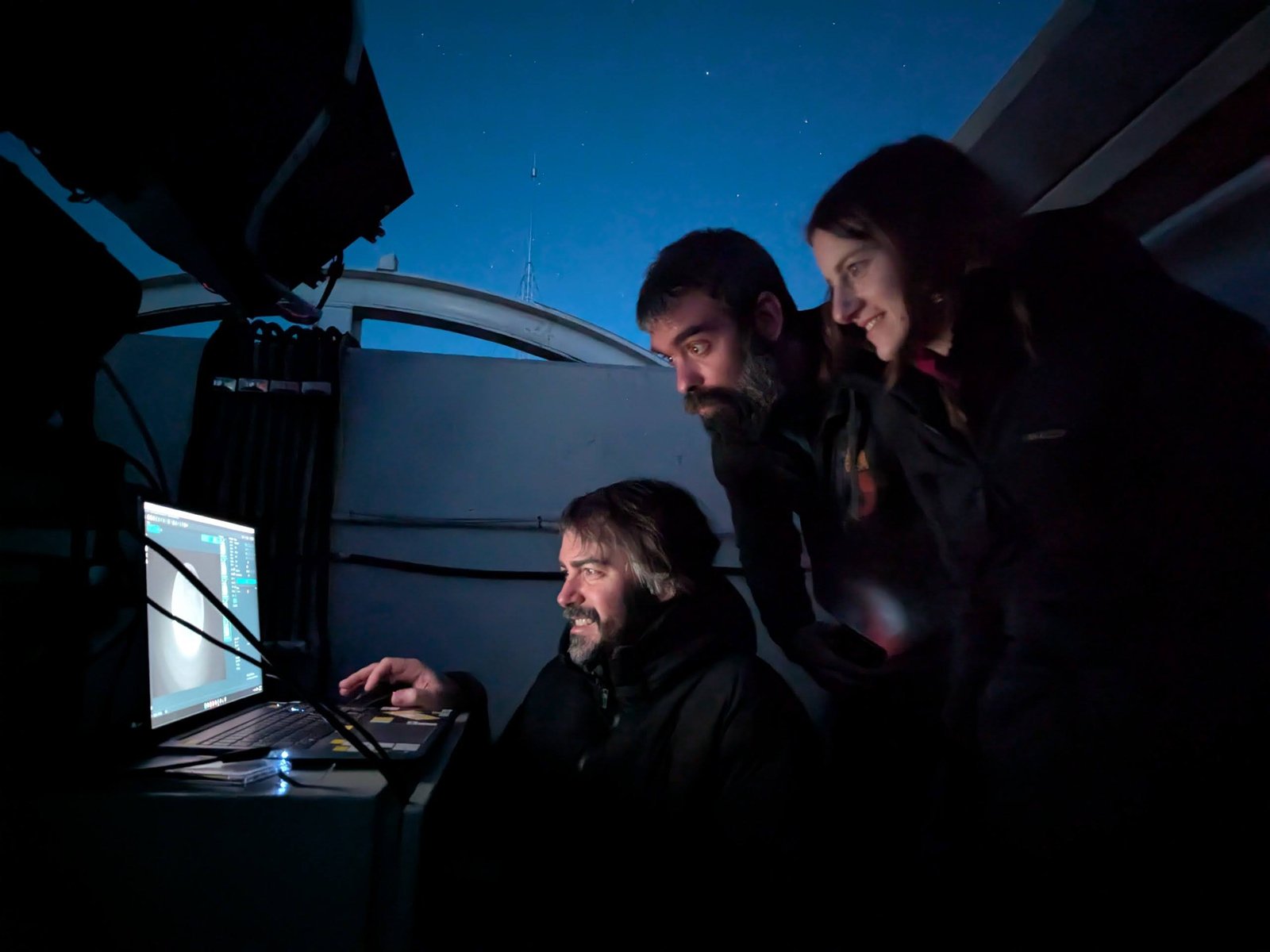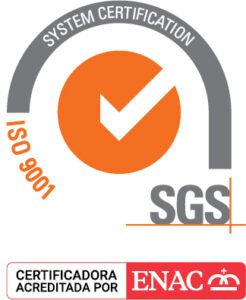Press Release – May 23, 2025 – The ARRAKIHS space mission, selected by the European Space Agency (ESA) and led by Spain, has begun its scientific preparation phase at the Javalambre Astrophysical Observatory (OAJ) in the province of Teruel. This milestone marks a key step towards the mission’s scheduled launch in 2030, which will study the galaxy formation process—including the role of dark matter—in systems like the Milky Way.
The On Ground Demonstrator (OGD), very similar to the one that will be launched into space, is already in operation at the OAJ. It is a binocular camera iSIM-170 built by the Spanish company Satlantis, and acquired by the Instituto de Física de Cantabria (IFCA, CSIC-UC). This camera consists of two telescopes, plus a multiband imager, capable of observing in both the visible and near-infrared spectra. It is fully adapted to operate on solid ground, thus achieving a high level of detail of the observed galaxies.
On the one hand, the performance of the ground-based demonstrator will be tested with real data, i.e., whether it achieves the required image depth and quality. It will also allow testing and validation of the observation and data analysis strategies, in order to optimize these mission parameters prior to launch.
“Our goal is to be as prepared as possible for launch while reducing any uncertainty,” says Antonio Marín-Franch, OAJ researcher in charge of the project, who is also member of the ARRAKIHS Core Team. “This will allow us to conduct feasibility studies of some critical elements of the mission” says Marín-Franch.
The mission that explores the invisible
ARRAKIHS (Analysis of Resolved Remnants of Accreted galaxies as a Key Instrument for Halo Surveys) seeks to deepen our knowledge of dark matter and galaxy formation, with special interest in the Milky Way.
During three years it will observe more than seventy galaxies in the near environment similar to our own, in visible and infrared light, aboard a minisatellite in low Earth orbit (650-800 kilometers). This will overcome the challenge of obtaining deep images at such low levels of surface brightness from Earth, due to atmospheric interference.
“The investment made by IFCA in this demonstrator is a huge help for our work,” says Biuse Casaponsa, IFCA researcher and coordinator of the mission’s project office. “Being able to test the instrument under real-world conditions like those of the OAJ is crucial for proper preparation.”
Location: Javalambre Astrophysical Observatory
The [Observatorio Astrofísico de Javalambre (OAJ)] Observatory, one of the seven astronomical Singular Scientific and Technical Infrastructures (ICTS) of the country, provides the site and the mount where the ground demonstrator is already installed. Specifically, it is located in the so-called Monitoring building and the tests being carried out also involve the development of services, remote access and connectivity. This milestone in the critical review of the instrument is one of the main contributions of CEFCA, the center that manages the Observatory, to the mission at this time.
The experience of the staff and the ability to lead and develop international projects are some of the strengths of the CEFCA teams, which, together with the exceptional sky conditions, make the OAJ the ideal place to test the ARRAKIHS mission.
With the camera installed at Javalambre, more than one hundred hours of observation will be devoted to each of the study galaxies, similar to the Milky Way, thus facilitating the validation of the instrument, the scientific approach and the data analysis tools. After its launch in 2030, the ground demonstrator will continue to support the space-launched instrument, enabling valuable comparison between ground-based data and those obtained from the orbiting satellite.
“The On Ground Demonstrator is something very unconventional on a space mission. Having ground-based observations with the same space camera at this early stage of the mission gives us a great advantage to optimize the scientific instrument“, shares Santiago Serrano, ARRAKIHS Instrument Lead, Science Director at Satlantis and Researcher at the Institute of Space Studies of Catalonia (IEEC), “It was spectacular to see these stunning deep space images for the first time with an iSIM170 camera – it exceeded our expectations.”
“The On Ground Demonstrator that we have developed at Satlantis for the ARRAKIHS mission is a fundamental step to validate the design of the ISIM-170 instrument that will travel to space as well as to validate the algorithms that will process the images of reference galaxies.
From the moment of its installation at the Javalambre Astrophysical Observatory we have started to receive images of extraordinary quality and these first results give us great confidence in the mission and the instrument“, highlights Eider Ocerin, Space Programs Director and ARRAKIHS Project Director at SATLANTIS.

Further research and training In addition to testing the ARRAKIHS observation strategy and camera performance, the demonstrator installed at Javalambre will also be used to conduct Earth-based science. In the future, it could become a small observatory dedicated to studying extremely faint galaxies, which are hard to detect with standard telescopes.
The project also includes an educational component: PhD students and amateur astronomers will be trained to operate the system remotely.
Participation of IFCA and Satlantis
IFCA (CSIC-UC) is the national institution leading the mission and purchased the camera, funded by the State Research Agency (AEI) and co-financed by the European Union under the State Programme to Address the Priorities of Our Environment, part of the 2021–2023 State Plan for Scientific and Technical Research and Innovation (PCI2023-143421).
On the other hand, the Spanish company Satlantis leads the industry part of the ARRAKIHS Mission Consortium (AMC), which includes technology companies from all over Europe. The consortium is also made up of universities and research centers with scientists and engineers from different European countries (Spain, Austria, Belgium, Portugal, Norway, United Kingdom, Sweden and Switzerland).


Related News:
Nota de Prensa en ES: 2025 05 23 NdP_ARRAKIHS comienza su investigación en el OAJ (SATLANTIS)
INFOBAE – La ESA desentrañará la materia oscura desde el observatorio de Javalambre (Teruel)
Arrakihs comienza su investigación en el Observatorio Astrofísico de Javalambre – Diario de Teruel
El telescopio que utilizará la misión espacial europea ARRAKIHS se ensaya en Javalambre – HERALDO
ARRAKIHS comienza su investigación en el Observatorio Astrofísico de Javalambre- HEGAN
ARRAKIHS begins research at the Javalambre Astrophysical Observatory- Parke.EUS
ARRAKIHS comienza su investigación en el Observatorio Astrofísico de Javalambre – TEDAE





















